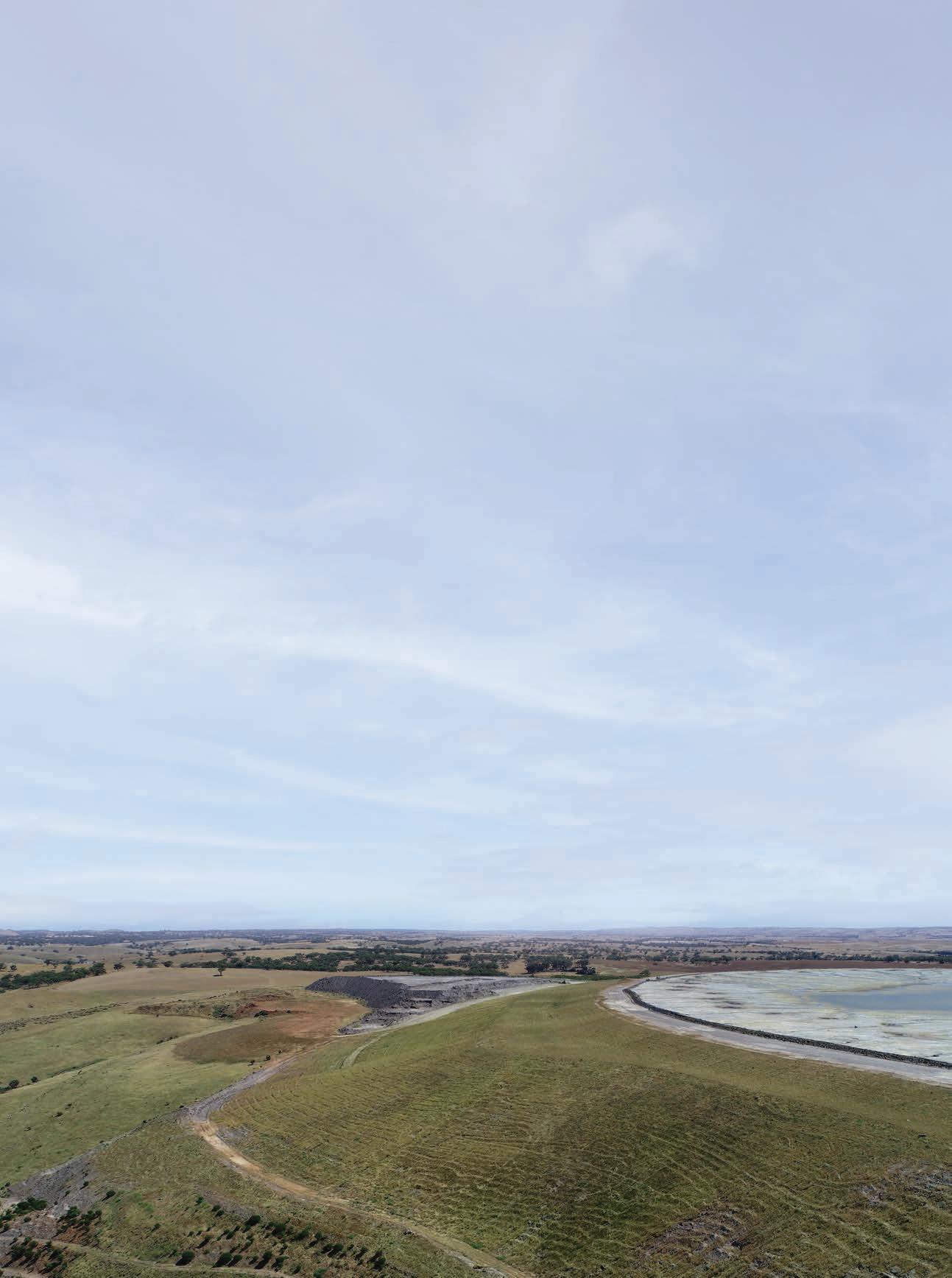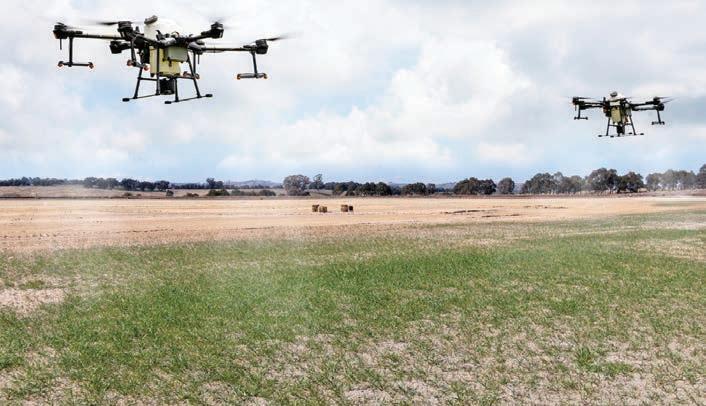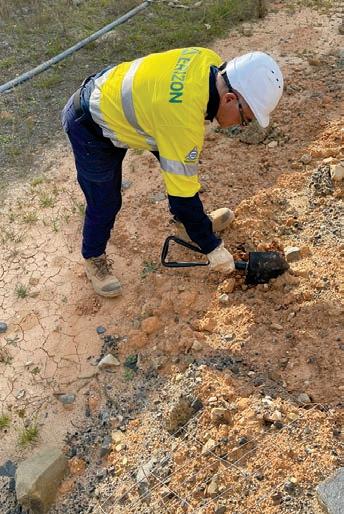
5 minute read
Bringing mine sites back to life
by Prime Group
SENIOR ENVIRONMENTAL ADVISER PHIL BARNETT SHARES WHY HIS ROLE AT ERIZON OVERSEEING MINE REHABILITATION STRATEGIES IS AS MUCH A PASSION AS IT IS A PROFESSION.
Mine-site rehabilitation is not just a requirement for mining companies, it’s an opportunity to demonstrate their long-term commitment to sustainable development during and after the mining of essential resources.
According to the Mineral Council of
Australia, Australian mining companies understand land rehabilitation is fundamental to responsible mining.
Mining rehabilitation is critical to ongoing community acceptance and a key indicator for corporate reporting.
The industry’s approach to land rehabilitation has improved significantly over past decades – an evolution driven by sustained investment in land rehabilitation techniques, evolving corporate values, greater community engagement, and government regulation.
While much progress has been made, the industry continues to raise the standards of rehabilitation methods to ensure mining’s compatibility with current and future land uses.
According to dust suppression and environmental experts Erizon, mining results in a major environmental impact that may affect more than the mine site’s immediate surroundings.
Revegetating with healthy, sustainable plant species that support existing ecosystems is the most efficient and effective way to exceed remediation requirements.
This is where Erizon’s Senior Environmental Adviser Phil Barnett uses his knowledge and experience to assist clients in providing exceptional results.
Erizon uses innovative techniques grounded in science to deliver effective, environmentally friendly revegetation, dust suppression and erosion control solutions for Australia’s mining, energy , civil and infrastructure projects.
“We rehabilitate land by using the latest technology to ensure the best possible outcomes” Barnett said.
“It comes down to understanding the components of the substrate that we growing vegetation on. There are very few projects we are involved in where we have good quality topsoil.
“We are often growing in mine waste or sub-soil materials, and that is where my expertise has really benefited the projects I’m involved in.
“My background is in farming, more specifically soil analysis– essentially dedicated to the science behind growing plants in difficult conditions.”
With the majority of mining sites located in remote or regional areas, preparing the area to regrow vegetation and establish rehabilitation takes careful planning.
“Australian soils are notoriously ancient and very thin, so in most cases there is not a lot of topsoil that is there to be salvaged,” Barnett said.
“It is easy to lose a lot of that topsoil in the moving and excavation process. What sets Erizon apart is that we like to undertake a full assessment of what we are growing on and then amend the soil
Mine rehabilitation practices have improved signifi cantly.
Drones provide additional safety to operators.

based on that assessment.
“Even when you are dealing with really difficult soils there are usually methods we can develop to improve the soil’s plant-growing characteristics as part of our program.
“We conduct a formal analysis of the chemical characteristics of the soil.
“What we are trying to do is get the soil in the best possible condition to germinate plants and get them established.”
Barnett said every mine site or project is different, highlighting the importance of assessing each one individually.
“We don’t have a generic program that applies to every site, we ensure we customise each program and tailor them specifically to that site,” he said.
“That way we can get the very best out of the material or the soil that we are growing on.”
Barnett said it is imperative to time the rehabilitation program for when there is sufficient rainfall to allow the seed to germinate, as well as maintain the growth until the seed is established.
“In Australia we have extremes of different weather conditions,” he said.
“In the tropics you have both a wet and a dry season, so it is tricky timing to get the seeding done so that things are germinated and starting to establish before you get extreme rainfall, that can simply wash everything away.
“In the areas with more Mediterranean climates you should do your seeding in the late Autumn when the soils are still warm so you can get the seeds germinated before the winter rainfall, then in the following Spring they take off.
“Understanding the climate is essential because in most cases it is almost impossible to continue to water the seeds.
Mining companies are often required to replant native vegetation depending on the legal requirements of the Environmental Protection Agency and the legislation of the state where the site is located.
Barnett said Erizon is able to tailor the type of seed based on the mining company’s requirements and uses the latest technology to monitor its progress.
“We use drones for mapping rehabilitation establishment, which gives us a great idea of how the rehabilitation is proceeding,” Barnett said.
“The multispectral cameras on the drones that we use are also able to spot particular vegetation types to help us calculate how well the program is progressing.”
“The use of drones in our mine rehabilitation projects enable us to collect large amounts of actionable data over difficult terrain with minimal risk.”
Safety is a priority for Erizon, with the company’s Vision Zero mission to ensure that its team, including clients, visitors, and contractors, are working together to minimise any potential risks.
Due to his extensive background as a former farmer and soil analyst, Barnett says he takes genuine pleasure in watching a mine site regenerate.
“I have recently returned from a project in Victoria where we had to vegetate with no topsoil at all, there was very heavy clay, and we have managed to get a great covering of native vegetation,” he said.
“We have a decent amount of eucalypt establishing in a short time frame, which is really gratifying to see.
“We managed to do that using EnviroSoil, which is an organically based biotic soil amendment that stimulates biological activity.
“It provides a medium for the seed to germinate, but also starts that process of soil formation. We applied it in this project and the outcome has exceeded the clients’ expectations, which is always pleasing to be see.”

Sampling chemical characteristics of the soil.










